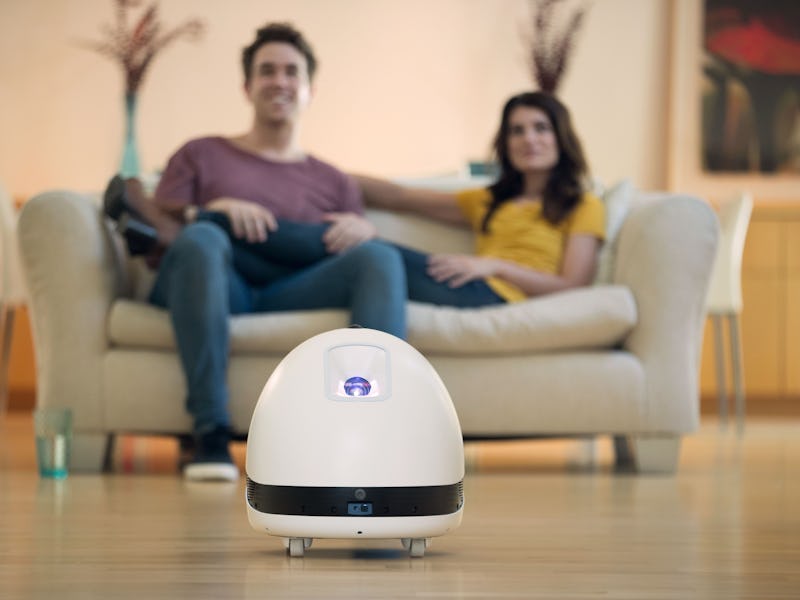Ex-Googler Showed Us an R2D2-Like Robot Made to Replace TV and Home Gadgets
Good bot.

The personal robot Keecker is designed to meet its owner’s every home entertainment need, and the very first entertainment it provides comes as it learns the geography of a new room.
When Keecker — and its human builder, former Google product manager Pierre LeBeau — visited the Inverse offices Tuesday, it only took a couple of seconds to get acquainted with its surroundings, but they were an elegant few seconds. It did a slow pirouette turn like a mechanical ballerina, looking like it was floating on the carpet, to create a quick map of the conference room we were in. It’s a robot that knows how to make a first impression.
The robot is the realization of its inventor’s dream. LeBeau wants us all to ditch our 4K TVs and home entertainment systems and replace them with a single robot companion. He has spent the past five years creating Keecker, a multimedia home robot that looks like a cross between a Roomba and EVE from Wall-E, with more than a little Star Wars droid in it too.
This robotic companion can follow you around your home projecting your favorite sitcom or blasting “Africa” by Toto with its built-in projector and speakers. When you’re not around, you can use its mobile video surveillance feature to see which one of your shoes your dog chose to devour today.
At first glance, this might seem like a glorified projector on wheels, but to Lebeau it signifies a shift in how people consume media and interact with technology.
“We had an idea of a machine that would be able to meet the need of entertaining people, plus a whole new world of possibilities,” Lebeau tells Inverse as Keecker rolls around on the floor. “We wanted it to eventually learn what you like and anticipate what you want to watch or listen to so you no longer have you to repeat an action every single day.”
As I saw at the beginning of the demonstration, Keecker only needed a few seconds to make the map of its latest surroundings. That map then appeared on the accompanying Keecker app on Lebeau’s phone, enabling the inventor to label different sections of the room so we could tell it exactly where to go.
Once it learns the lay of the land, it can autonomously make its way into your living room with a simple request: “Keecker, come to the living room.” Not only will it listen to your every command, but Keecker will also remember how you last used it in each room so it knows what you want it to do next time you’re sitting on the couch.
That is something that Lebeau says modern TVs will never be able to do and why he thinks robots like Keecker will be so prominent.
“We will eventually move from the passive technology of today where you need to turn on two screens and a speaker to meet one need, to technology that will understand the context of the situation you’re in and act accordingly,” he says.
Lebeau sees a future where instead of a whole house full of state-of-the-art devices we have a BB-8 look-alike trying to meet our every need. And while Keecker still has its kinks and bugs I think this idea isn’t all that farfetched, if it wasn’t for the price.
Ordering a Keecker will run you up to $1,990, while you could get most 4K TVs for roughly $500 depending on size. Lebeau’s robotic pet does have a a lot more bells and whistles packed into it, but this remains very much a luxury item, at least for the time being.
With the advent of home assistants like the Amazon Echo and Google Home, home robots seem like a natural next step for this type of tech. But only the future will tell if the price point will become more reasonable for the average household to be able to afford.